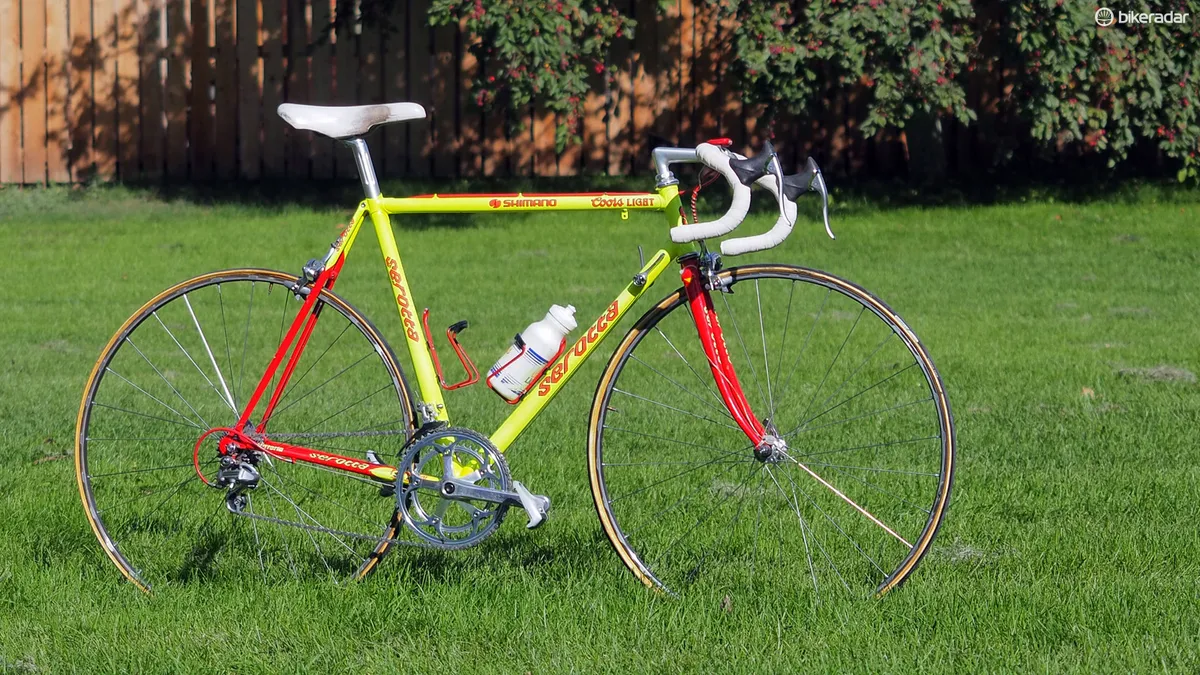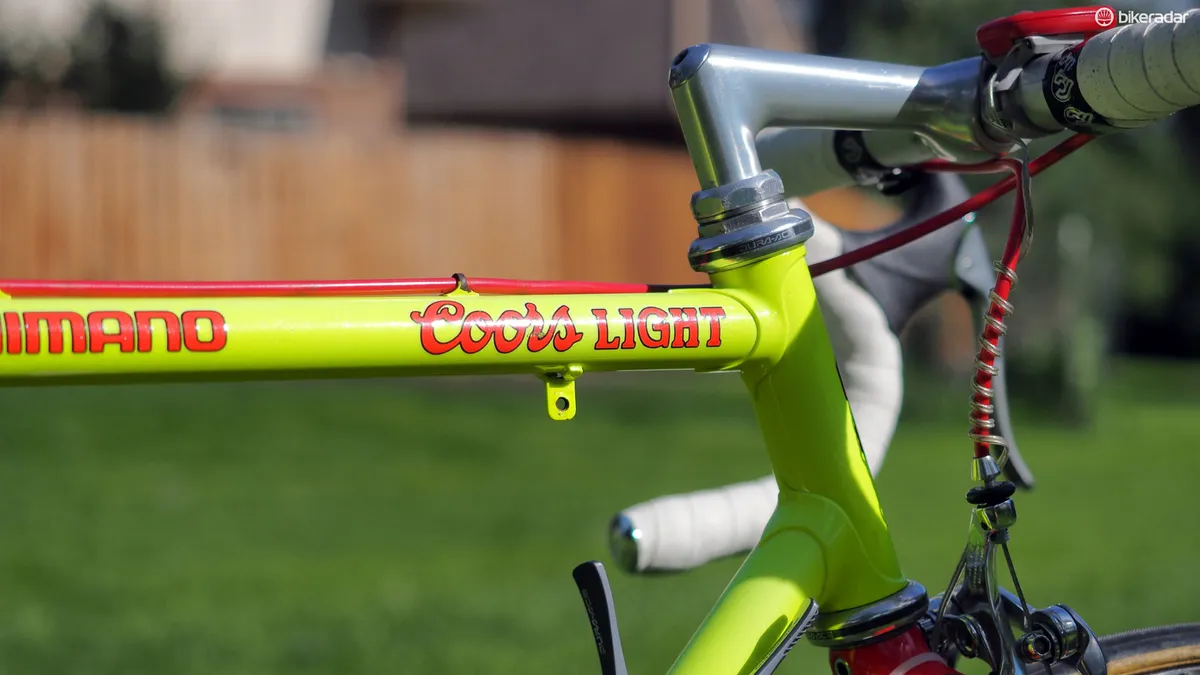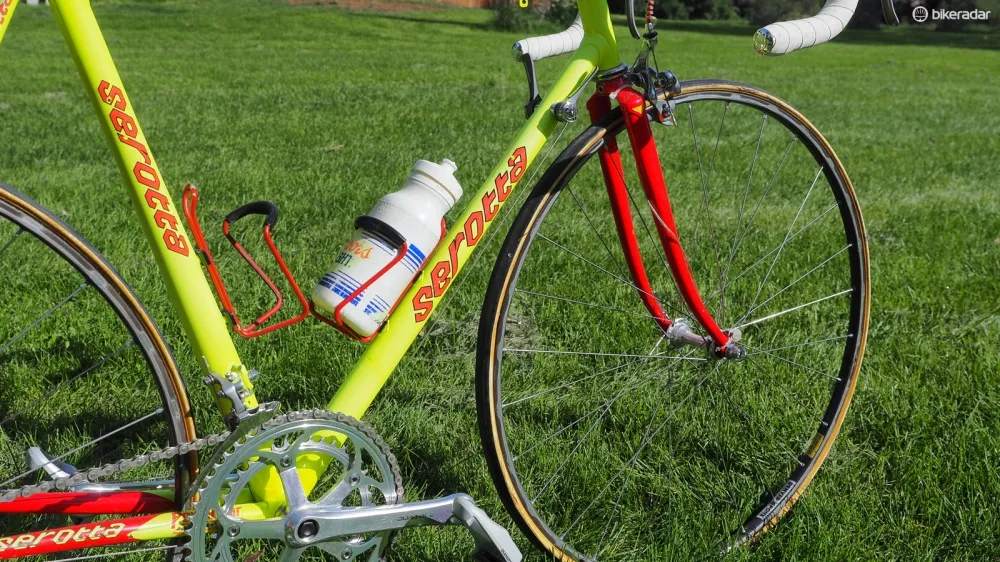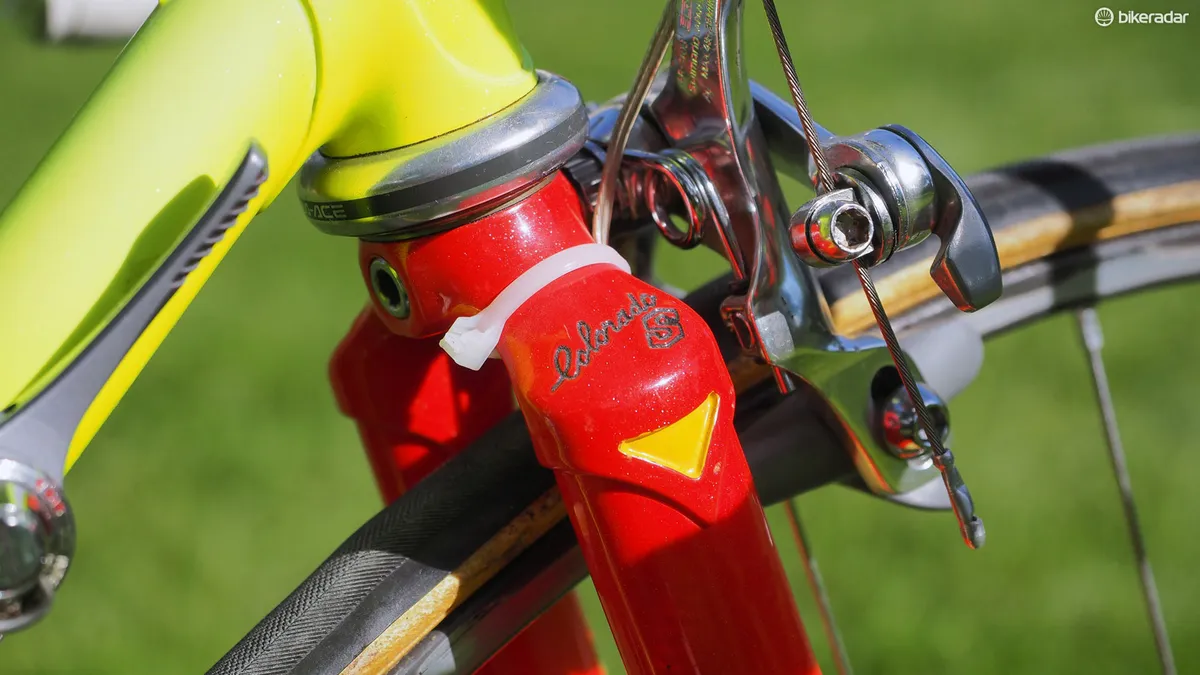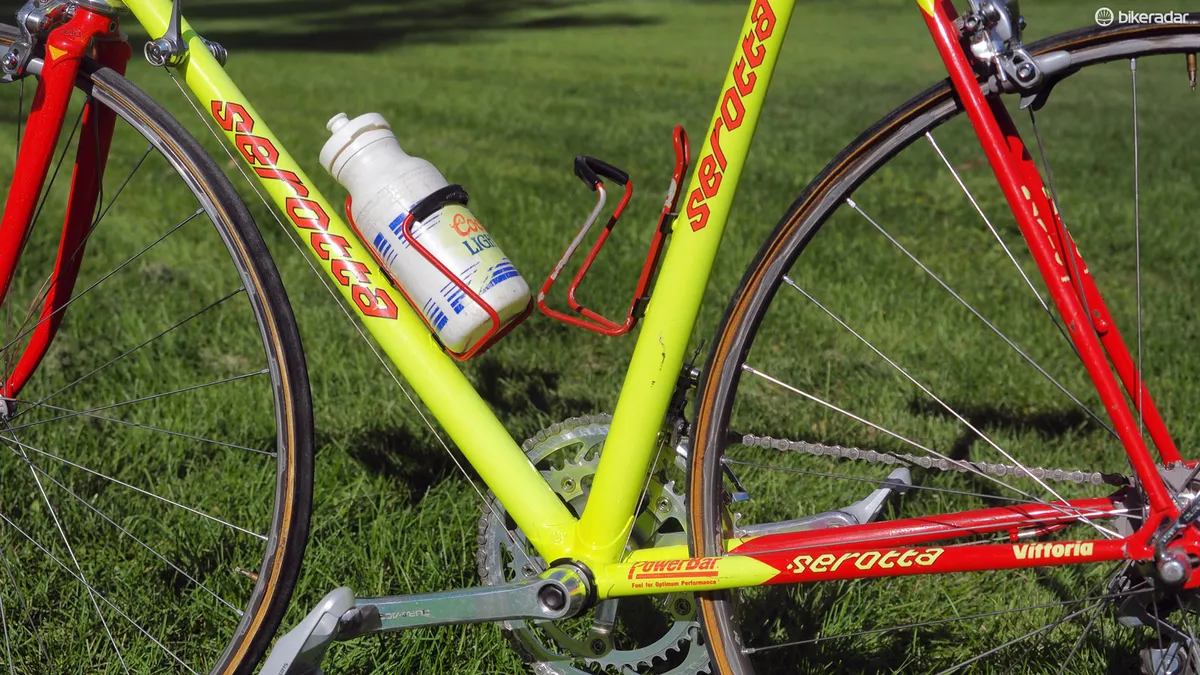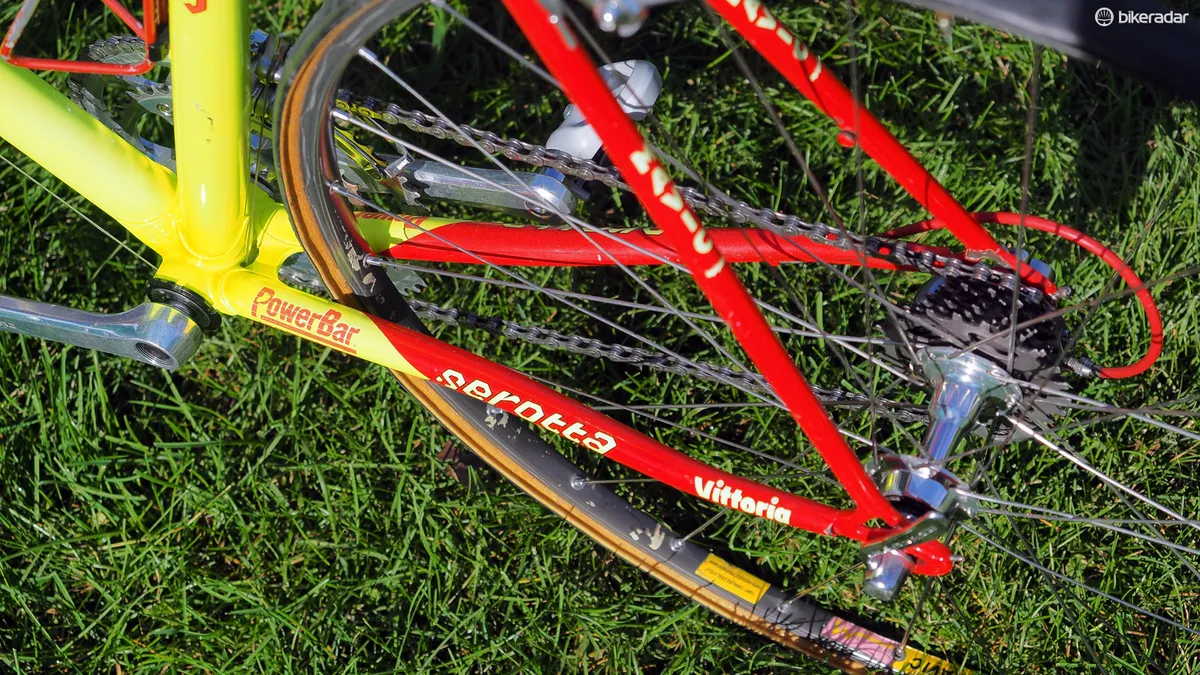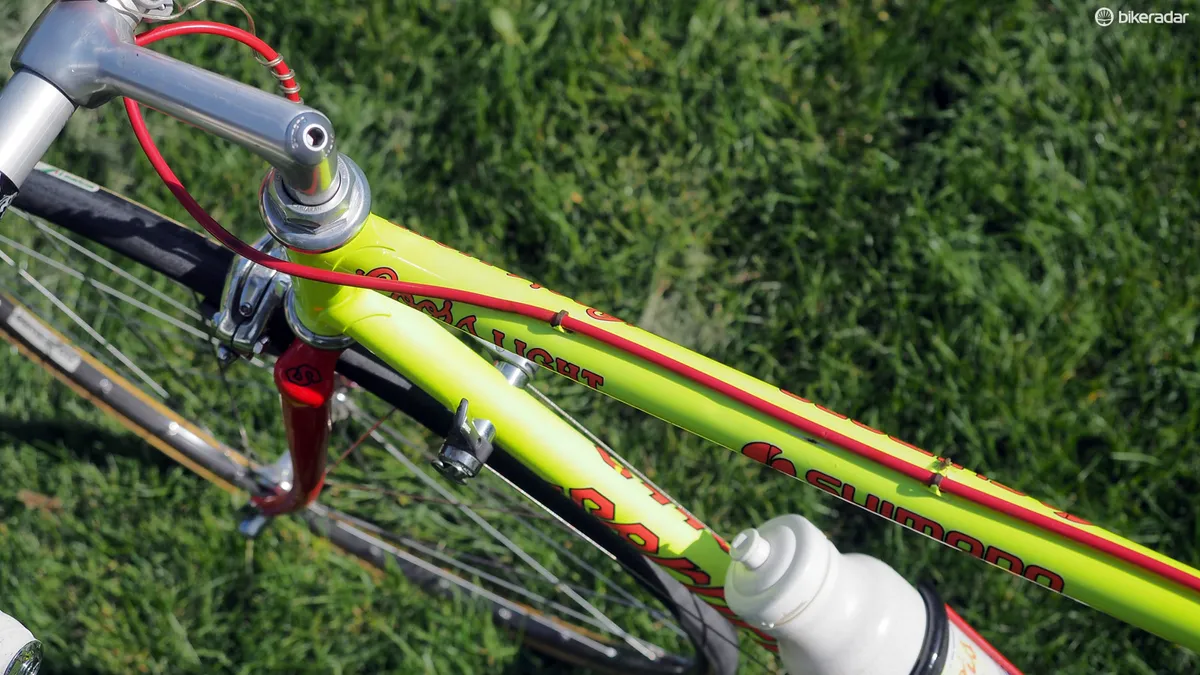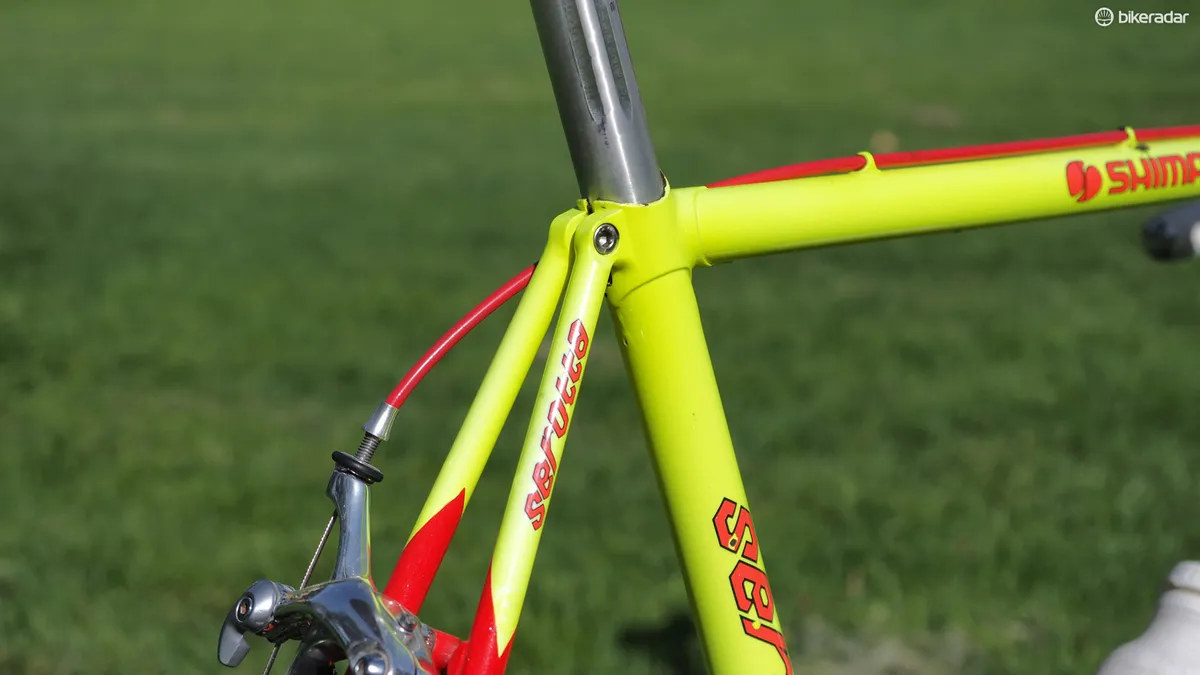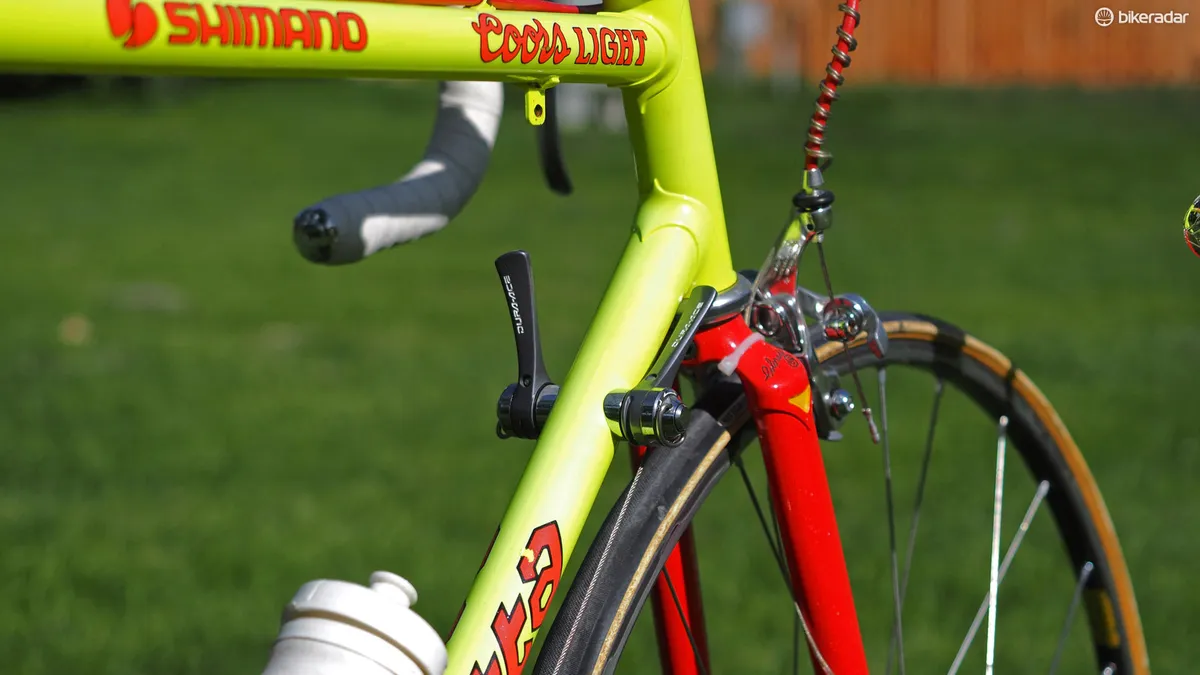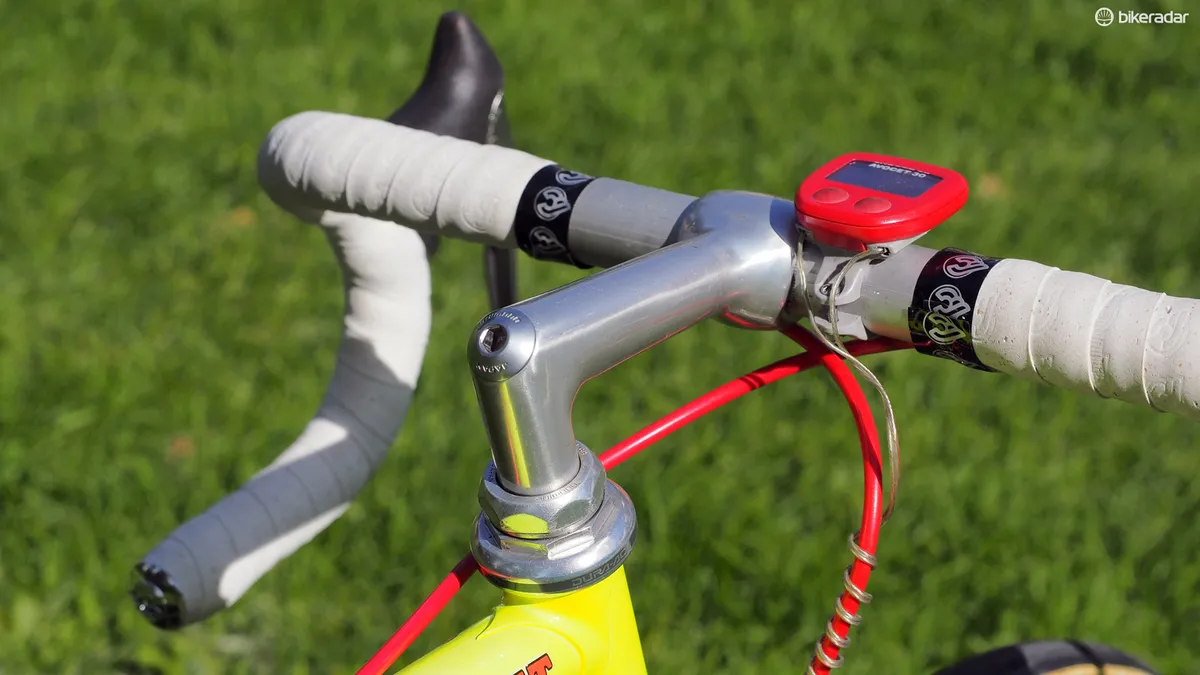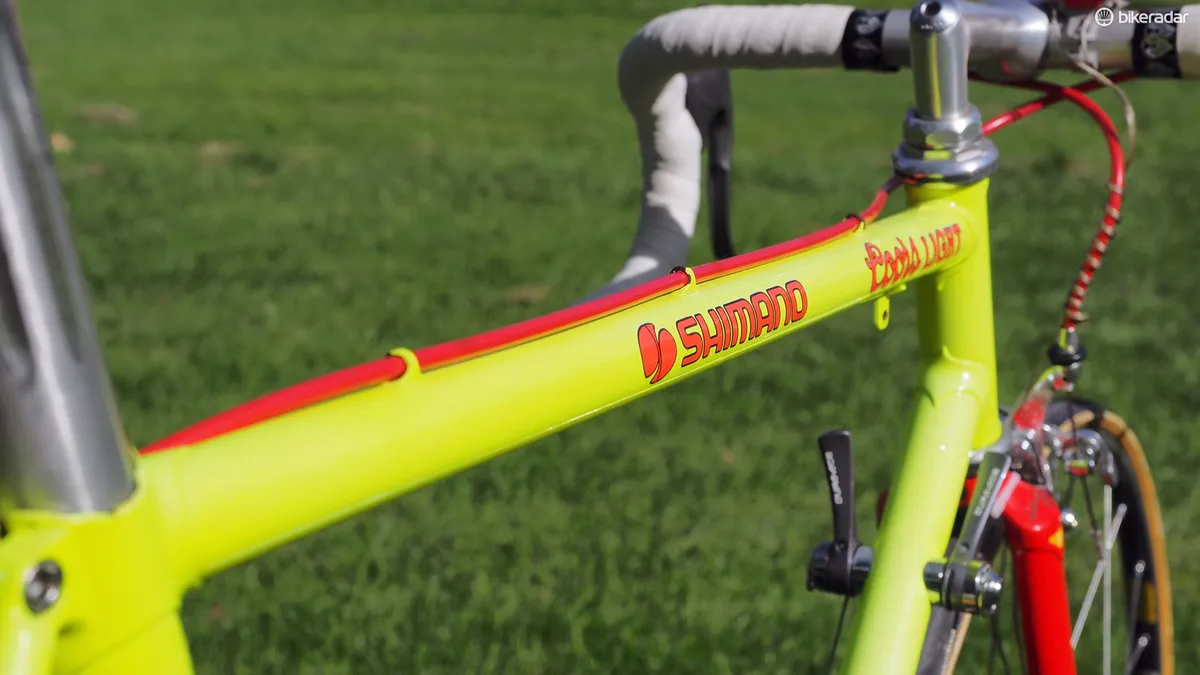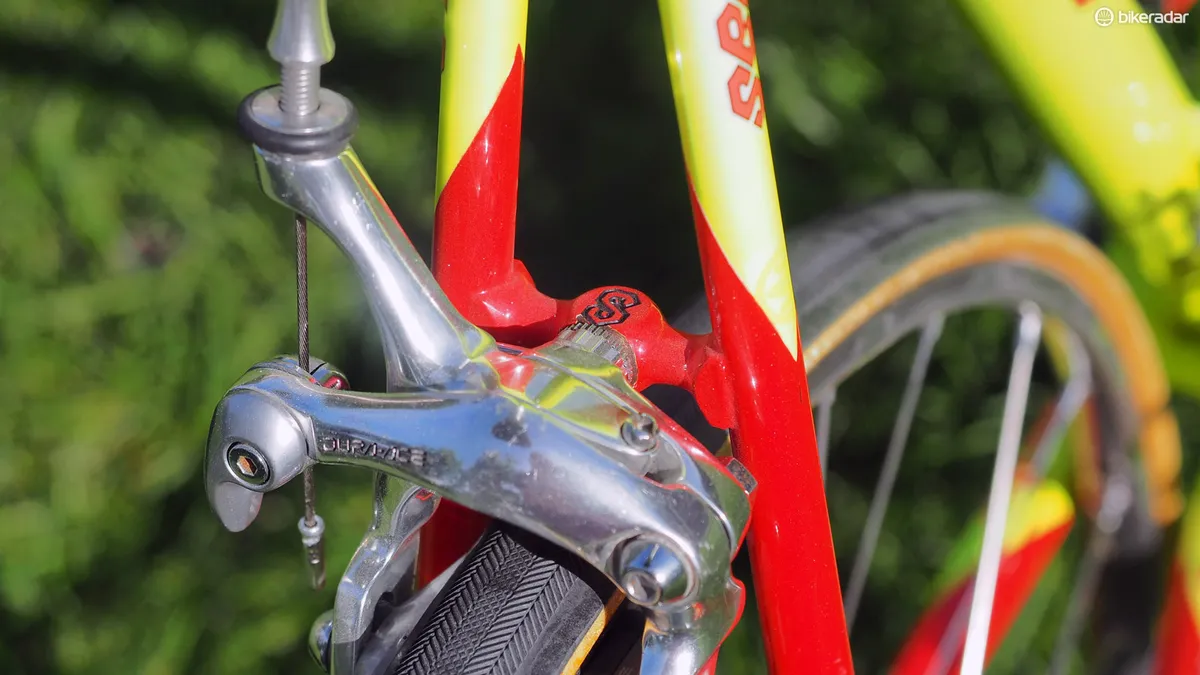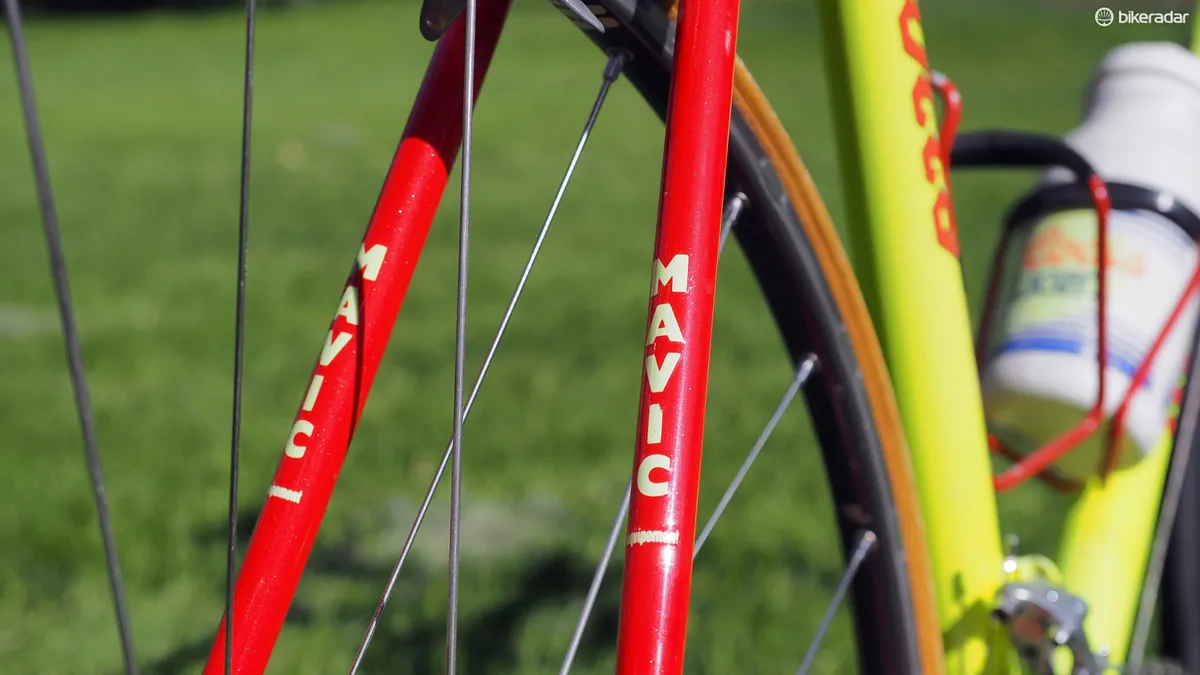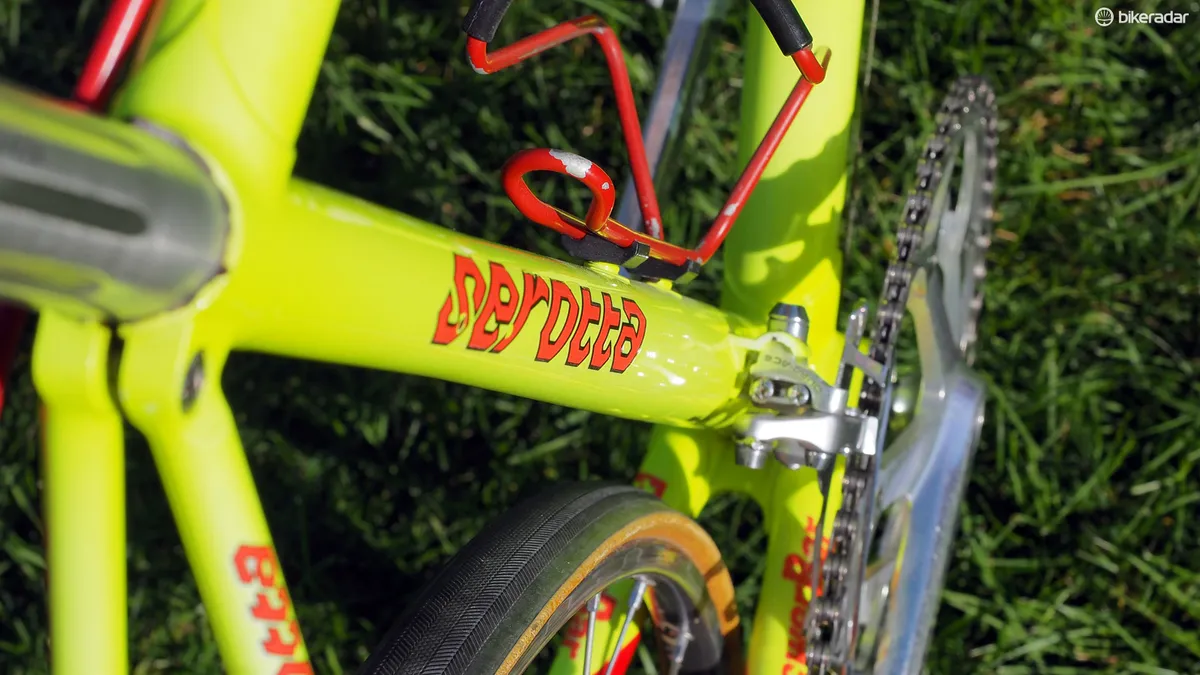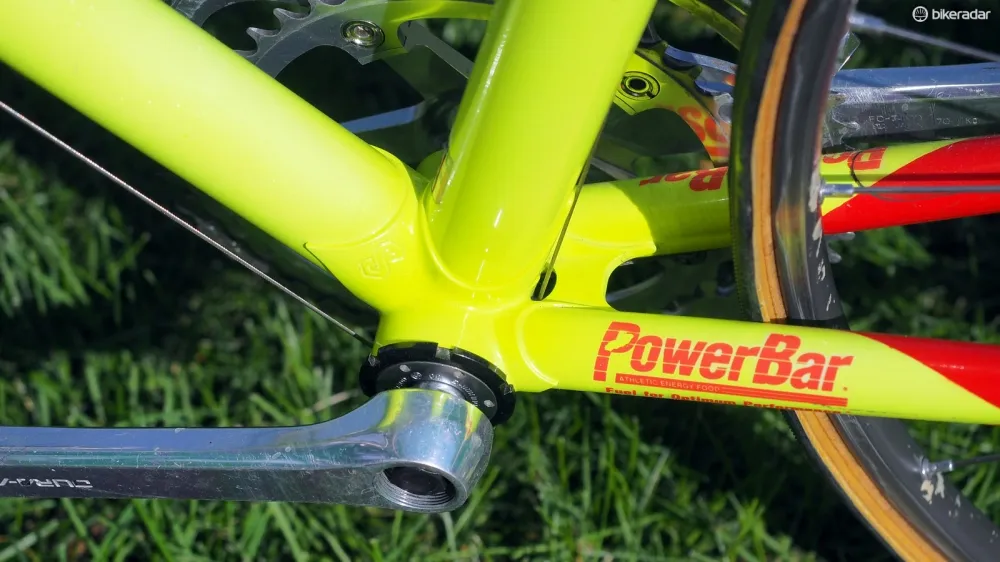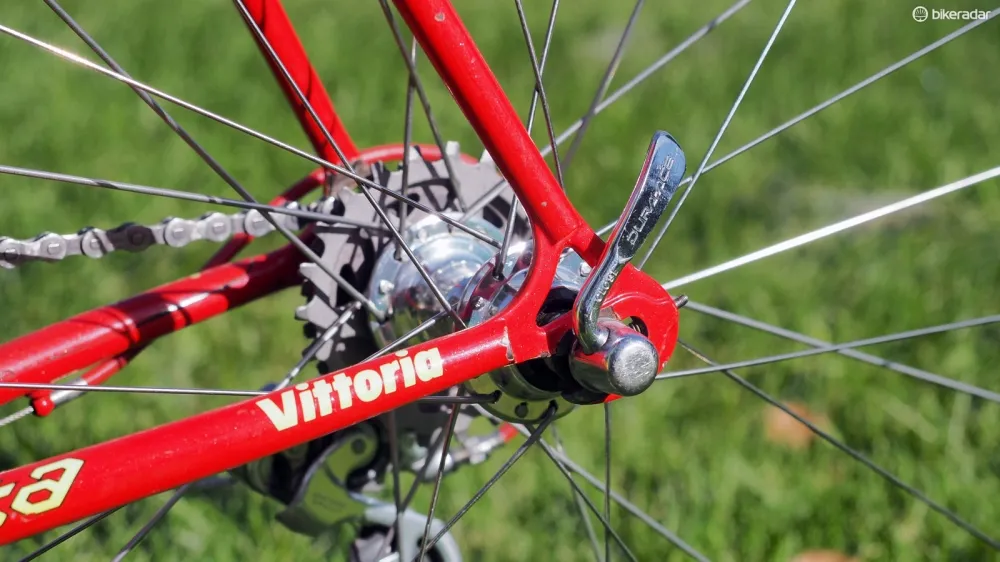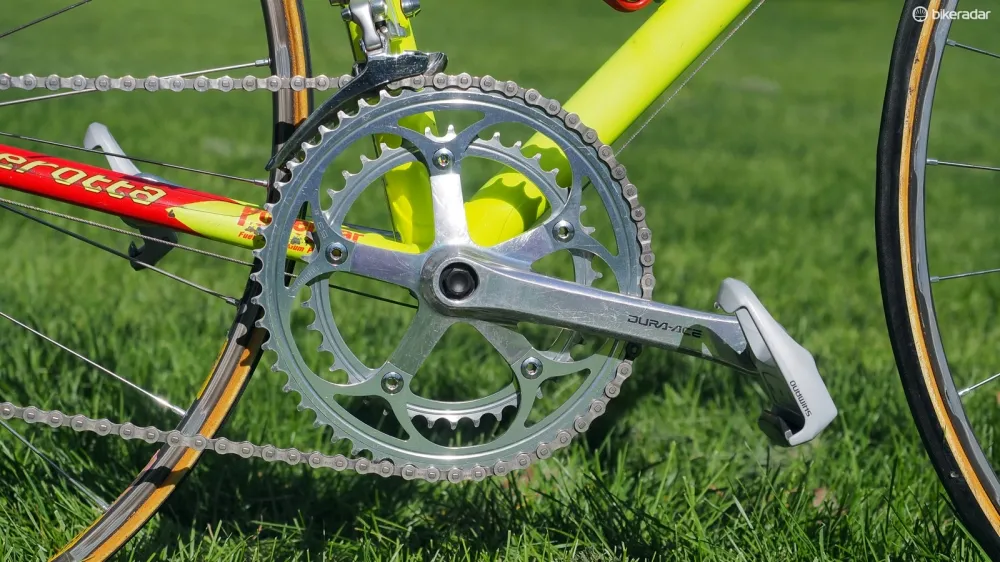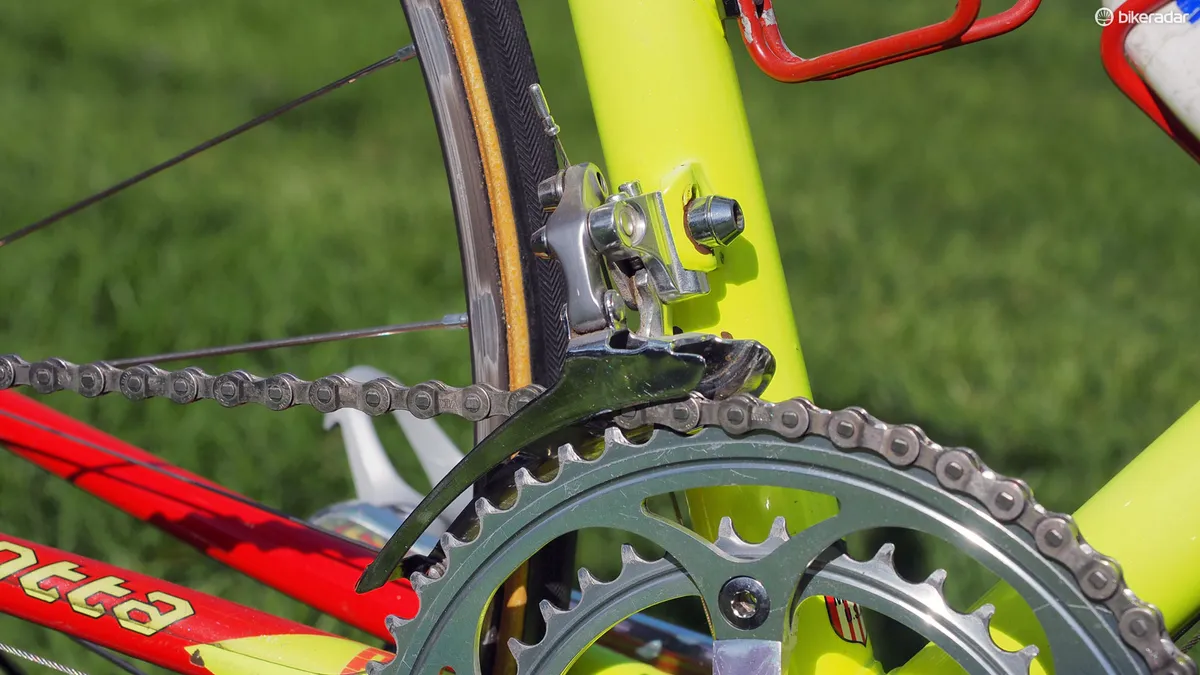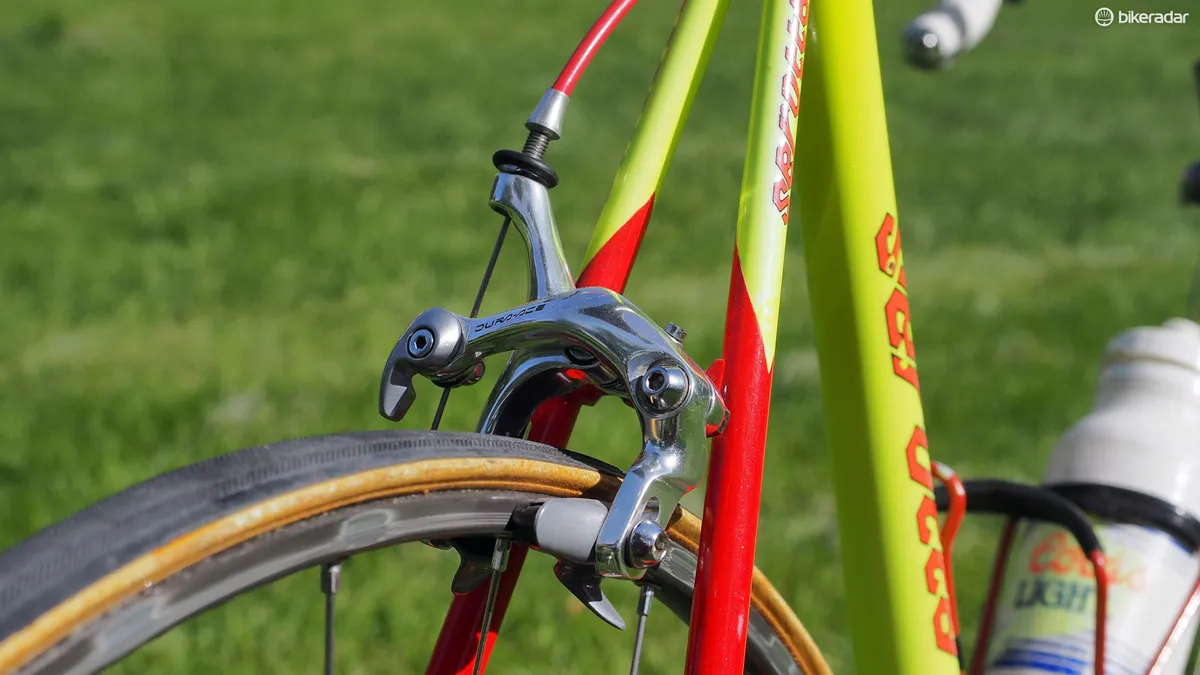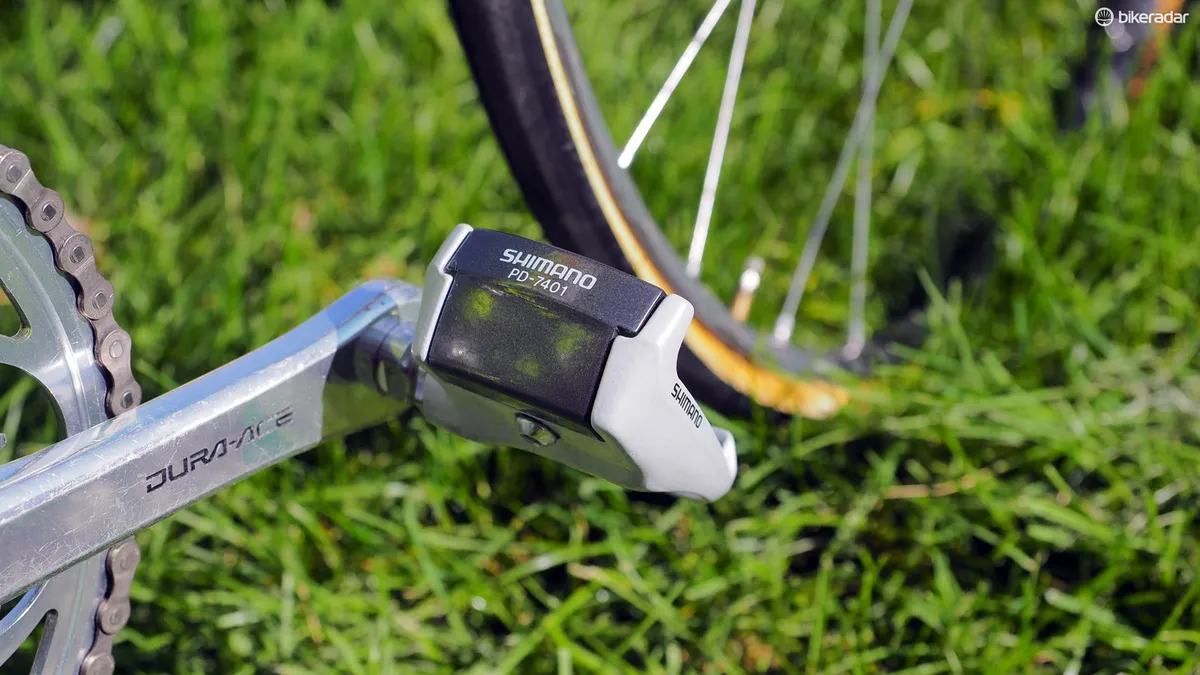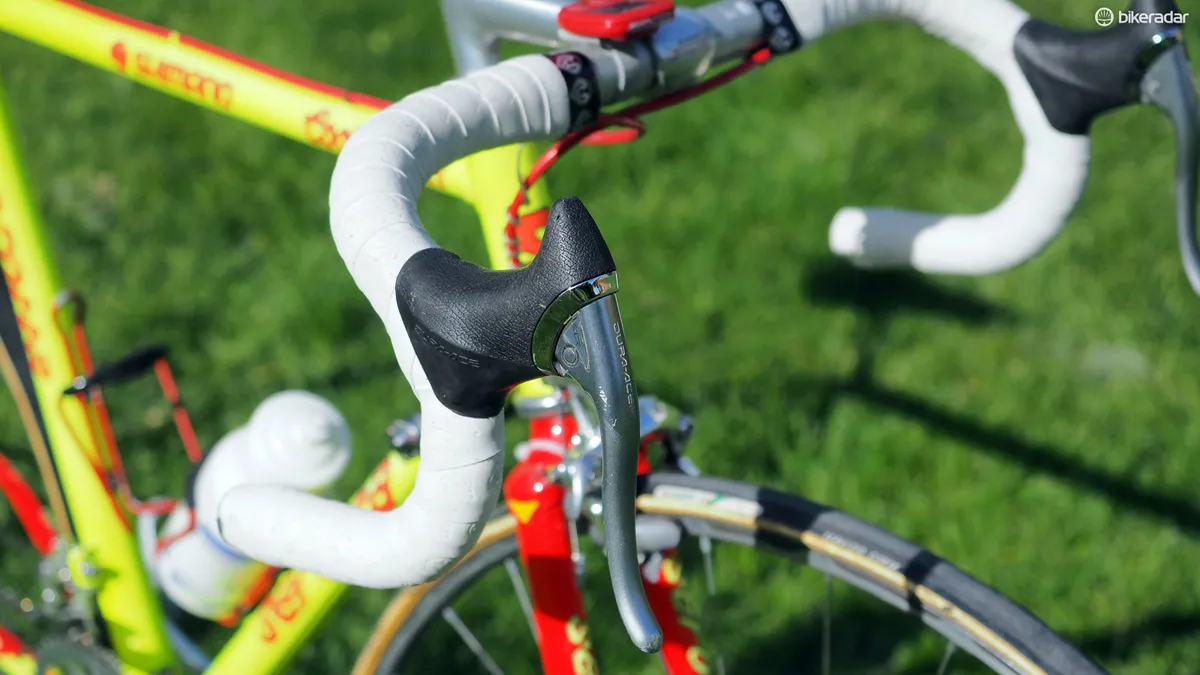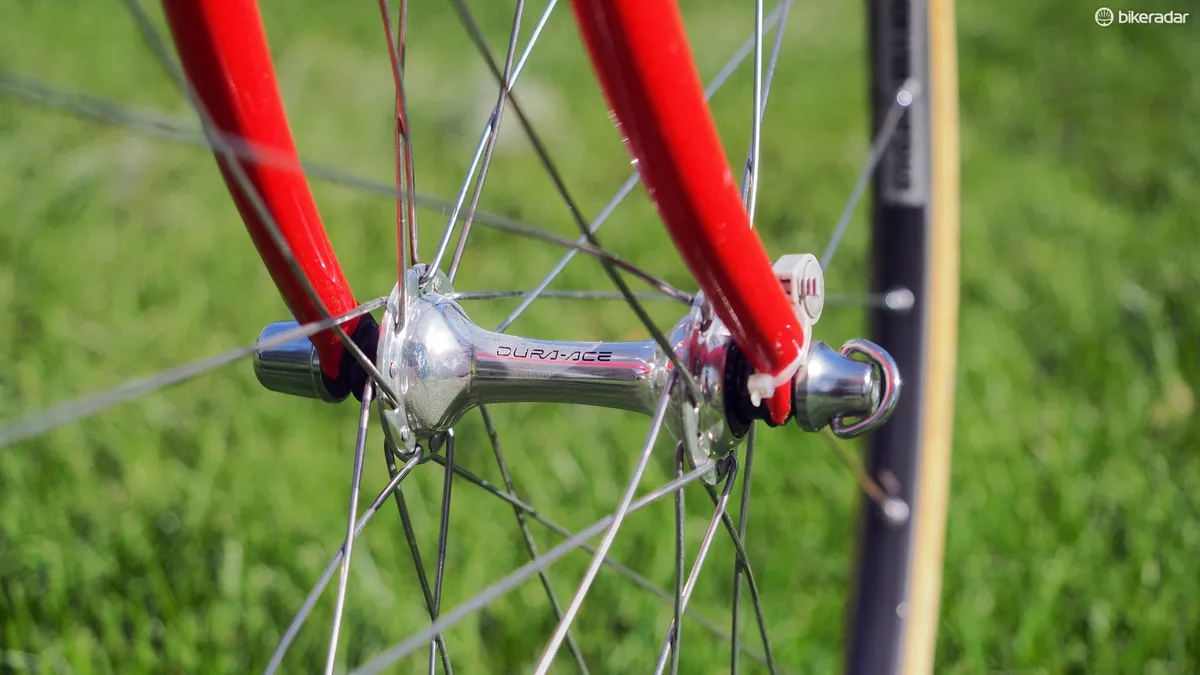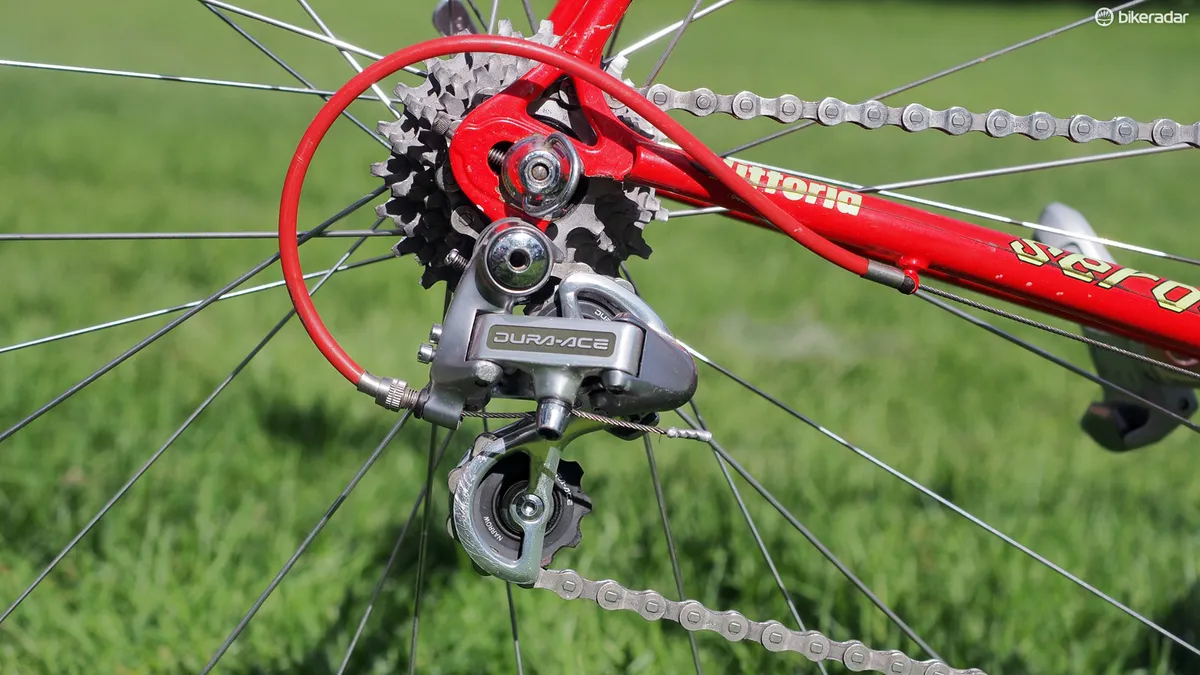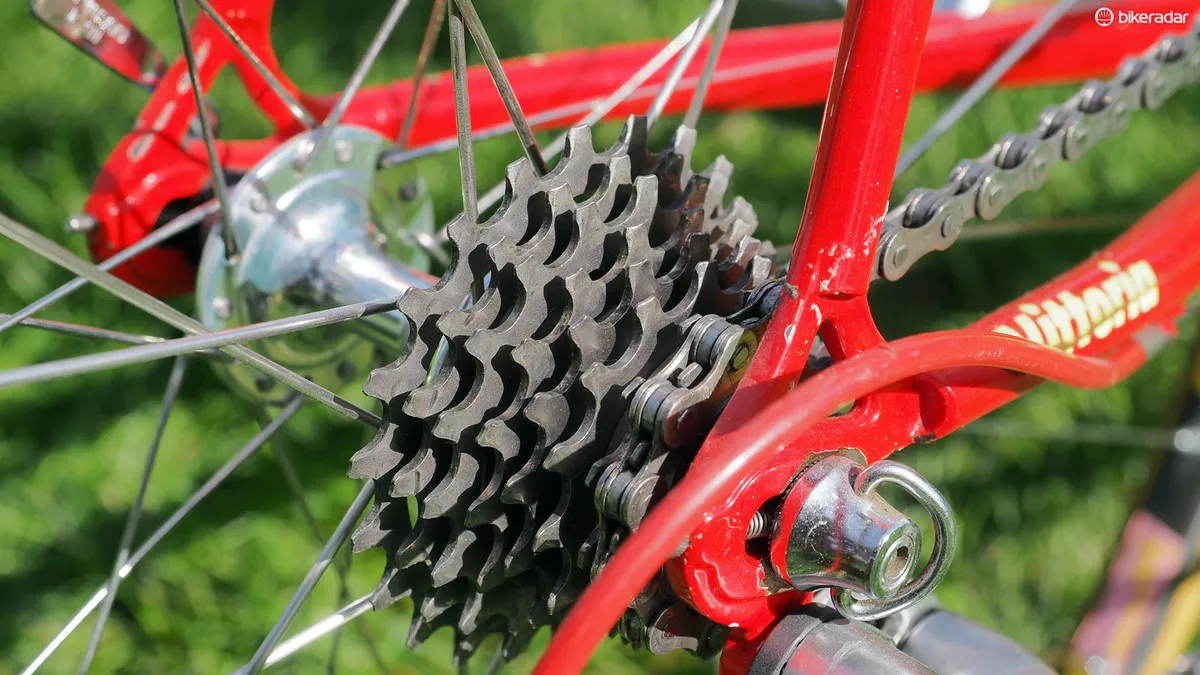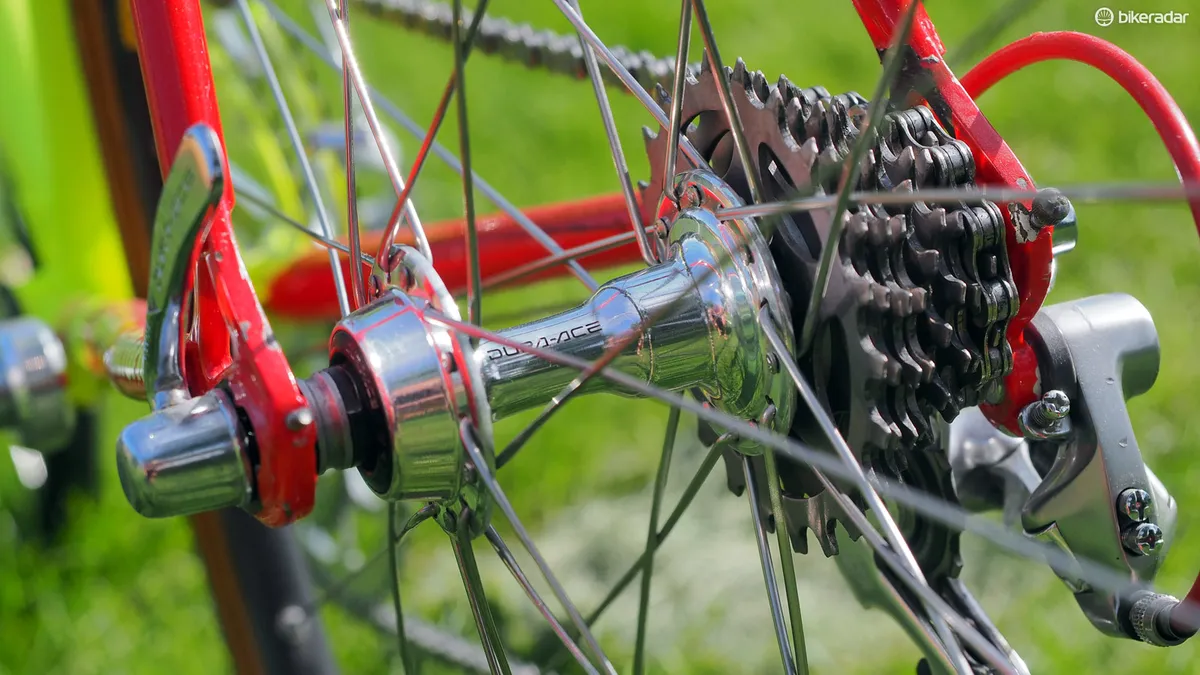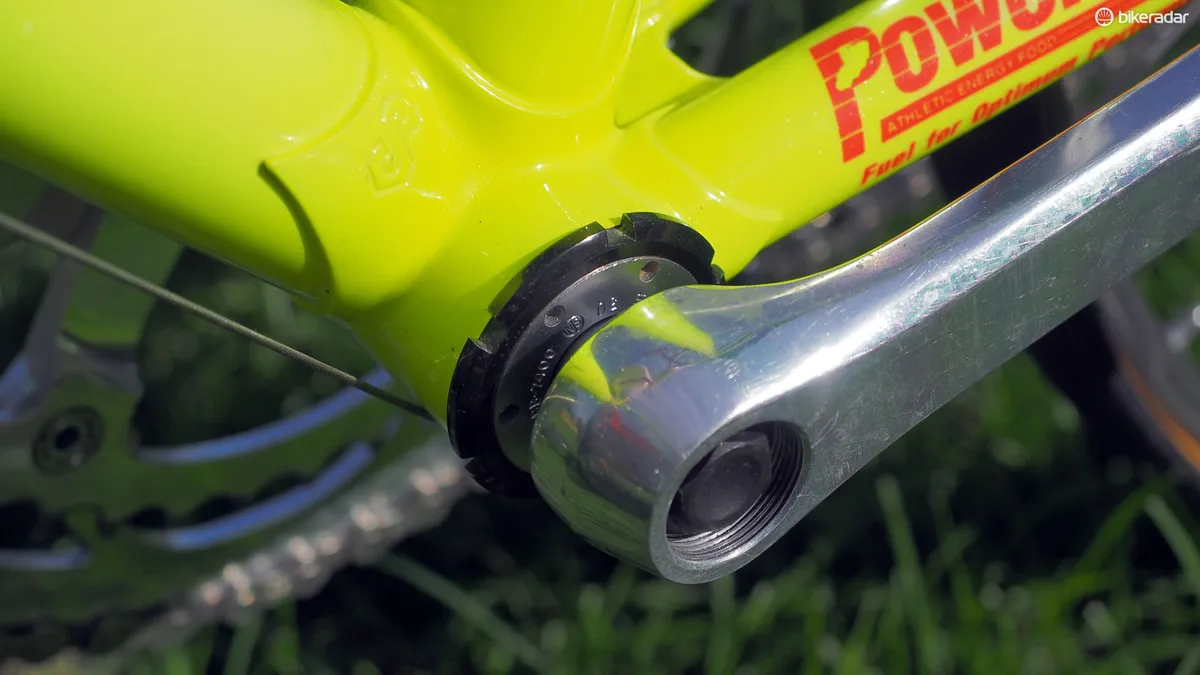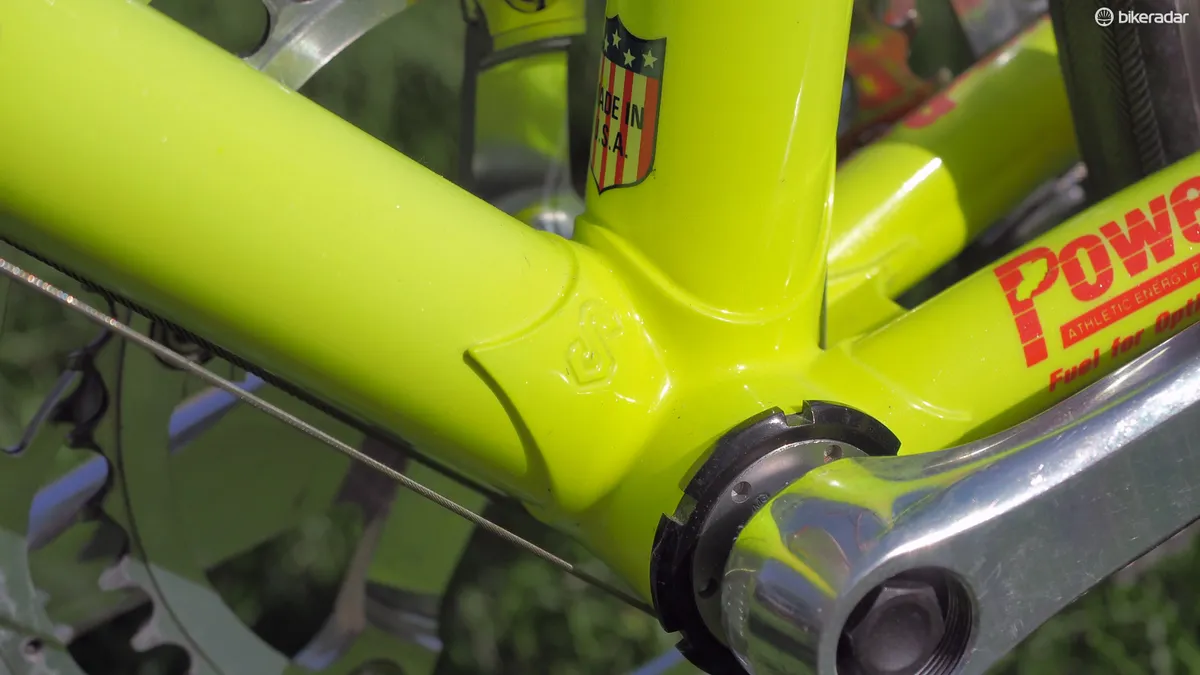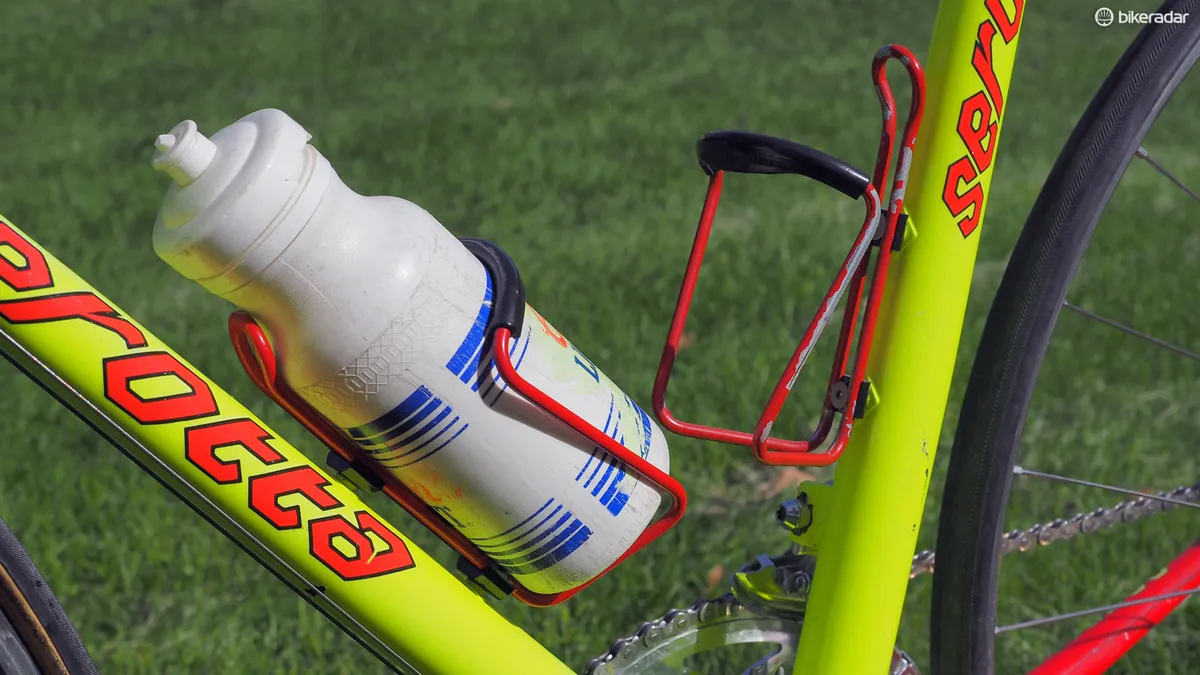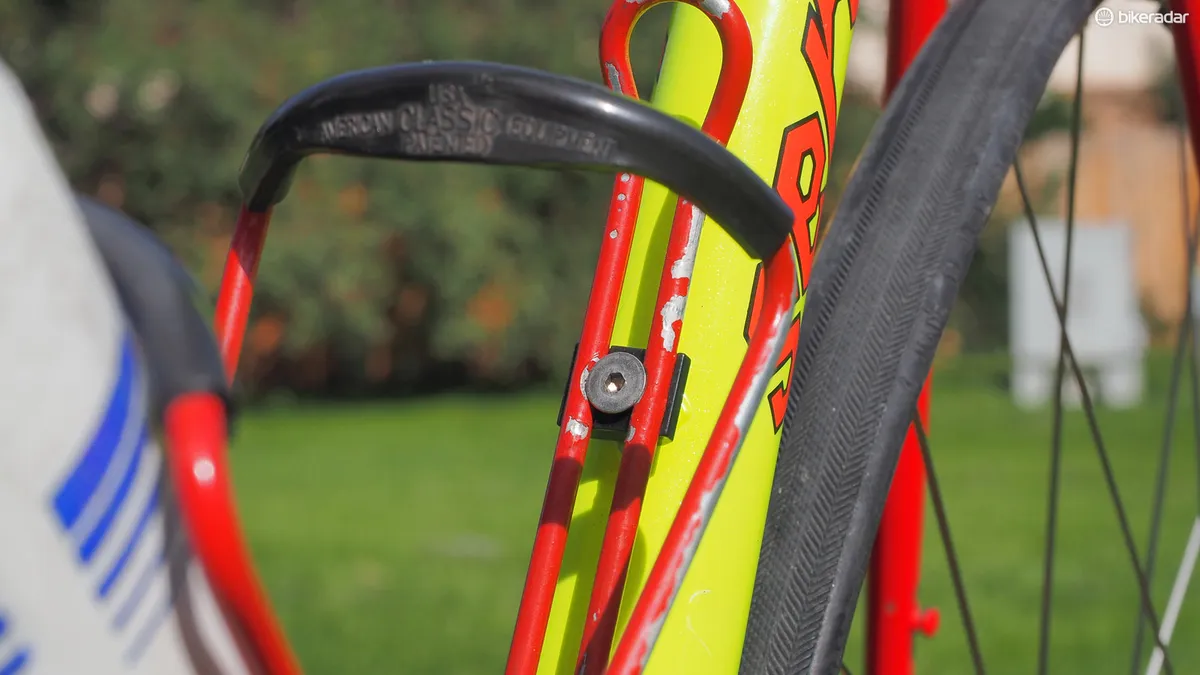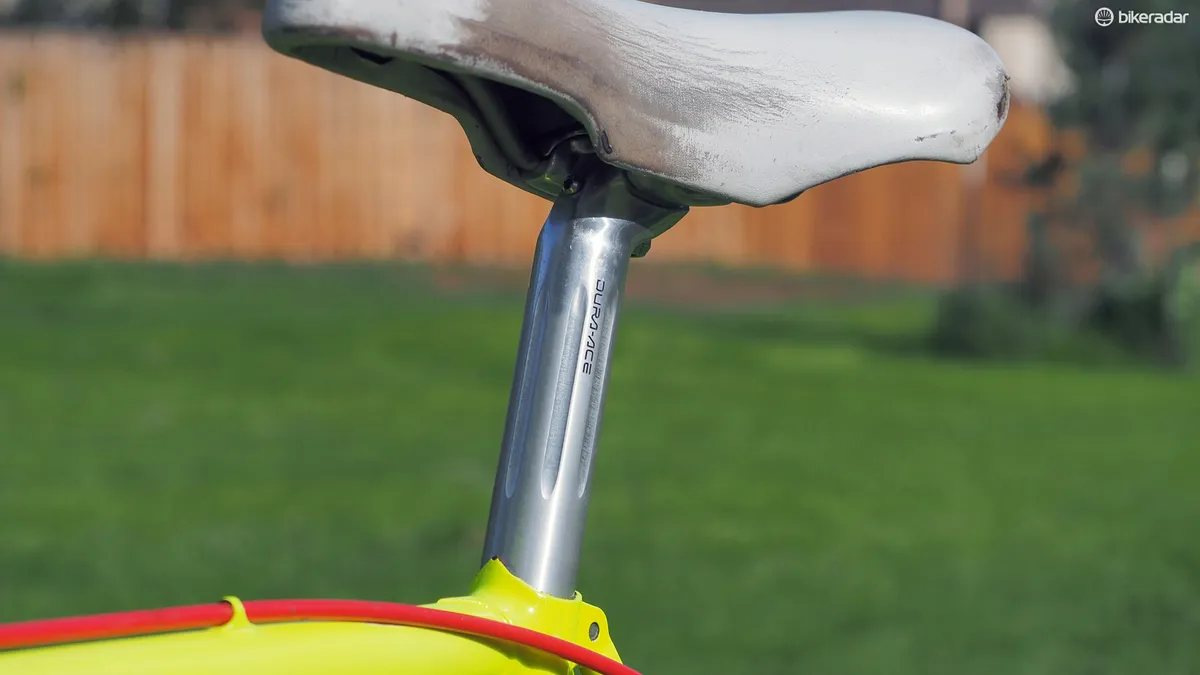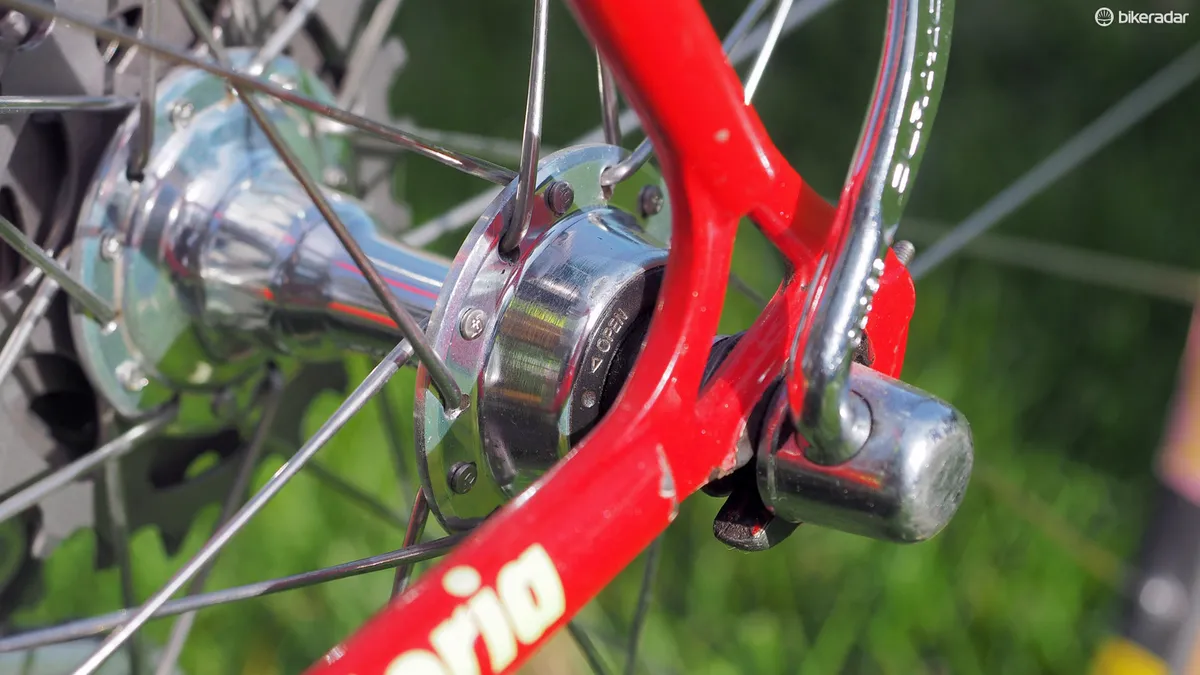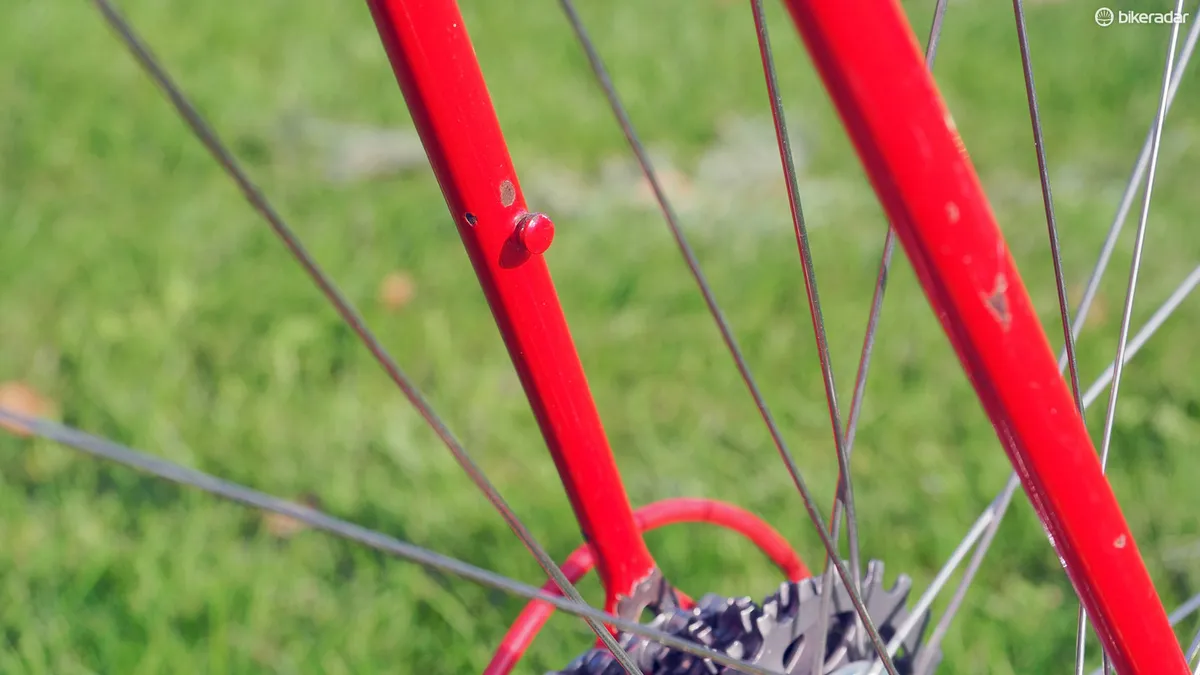Few US-based road cycling teams drum up as much nostalgia as the old Coors Light squad with its stacked roster of American talent in what was then a sport utterly dominated by Europeans. Naturally, it would only have been right for such a team to ride a similarly American bike, and here we present to you the Serotta Colorado II of team rider Scott Moninger, still resplendent in its neon yellow livery that doesn't seem to have lost even a bit of glow after more than two decades.
Some pro racers end up with a mountain of old race bikes at the end of their careers – rolling symbols of where they've been. Moninger has kept his collection much more sparse, keeping just the last bike he was issued as a pro, a couple in the middle of his illustrious 17-year career, and this one.
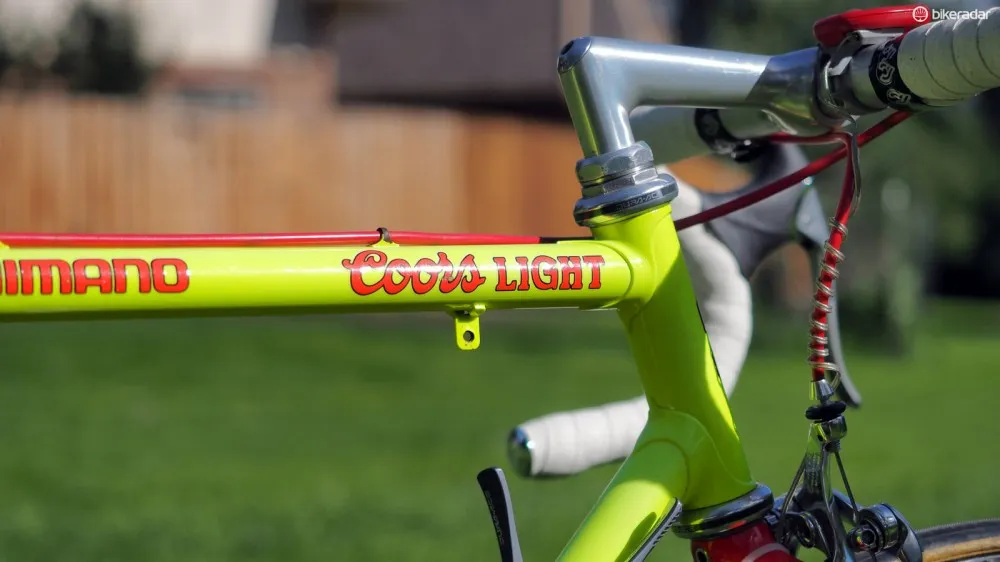
The Coors Light team was a powerhouse of US cycling in the early 1990s
The Kansas native was just 23 years old when he started his first season with Coors Light and as is often the case with neo-pros, he was usually forced to sell his race bikes as the end of the year. This one was obviously quite special, though, and he's certainly happy that he kept it.
"For me to even be on that team was definitely a dream come true, being surrounded by guys like Davis Phinney, Alexi Grewal and Roy Knickman – guys that I grew up reading about and aspiring to be like," Moninger told BikeRadar. "It was the only place I wanted to be at that time. So that bike brings back very fond memories and certainly the four years that I was part of that Coors Light team was one of the highlights of my career for sure."
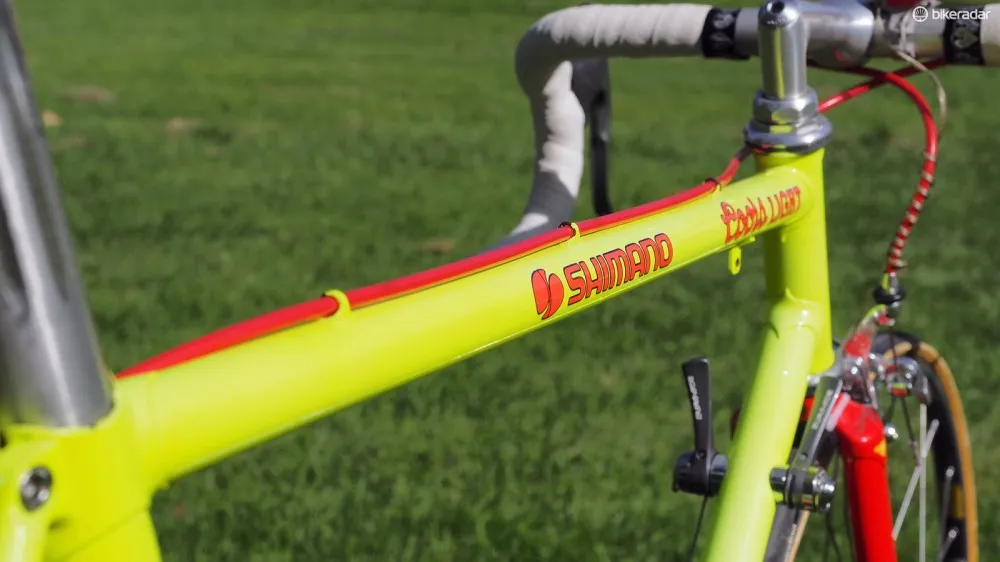
The fluorescent yellow paint was hard to miss then - and still gleamingly bright now
While low weight wasn't among the bike's list of virtues – even Moninger remembers it for its heft – the Serotta Colorado II was nevertheless far ahead of its time in many design aspects. Whereas most steel frames of its day carried on with smaller-diameter tubes of constant size, the Colorado II's down tube and seat tube flared to a comparatively gargantuan 36mm as they approached the bottom bracket to boost drivetrain stiffness without adversely affecting the classically high-quality ride that good steel frames are known for. And although the top tube appears from the side to use a constant shape from end to end – and it does in fact use a constant height throughout – it's actually ovalized at the head tube to improve front-end torsional stiffness.
"Rather than just using standard tubesets and assuming that what [the tubing manufacturers] were producing were the best that we can do, we started playing with diameters and wall thicknesses and shaping," Ben Serotta told BikeRadar from his home in Saratoga Springs, New York. "The key people [at Columbus] have always had an engineering background, and good engineers thrive on trying stuff and testing ideas. It was a pain in the ass from a business standpoint because we wanted something different but on the other hand, they were excited by it and were very willing to work with us on some of the harder bridges we had to cross with that."
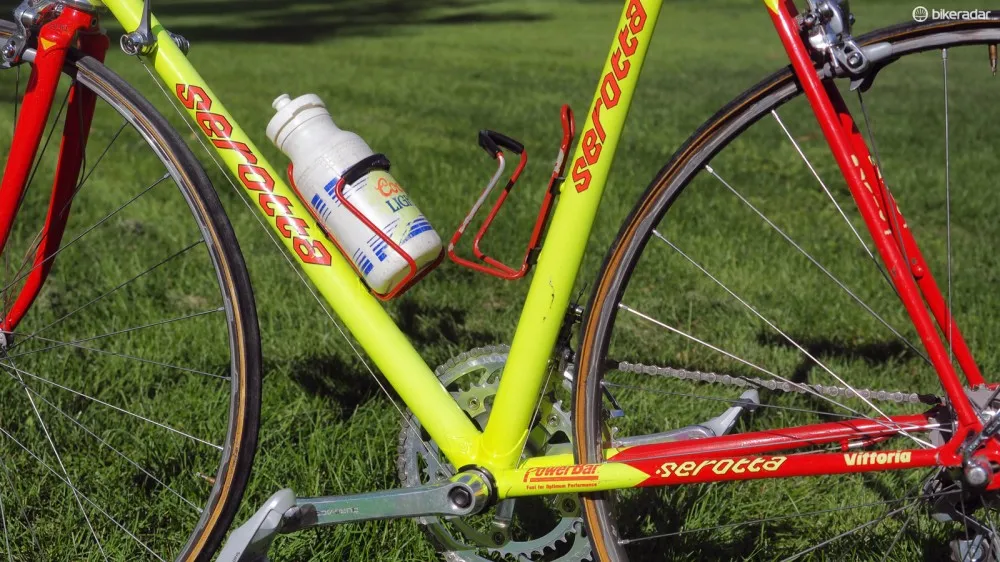
Such tube shaping seems commonplace now but was revolutionary back then. Note how the seat tube and down tubes increase in diameter at the bottom bracket
Likewise, the tight rear end sported sub-410mm chain stays with then-radical S-bend geometry – a feature originally developed when Serotta was building the US Olympic team's pursuit bikes, which used 24in wheels and ultra-short wheelbases. As it turns out, riders reported better responsiveness under power, too.
"It took us a while to figure this out," said Serotta, "but putting the bends in actually work hardened the material just a little bit. We also found that we didn't need to ovalize or indent the tube by putting the second bend in."
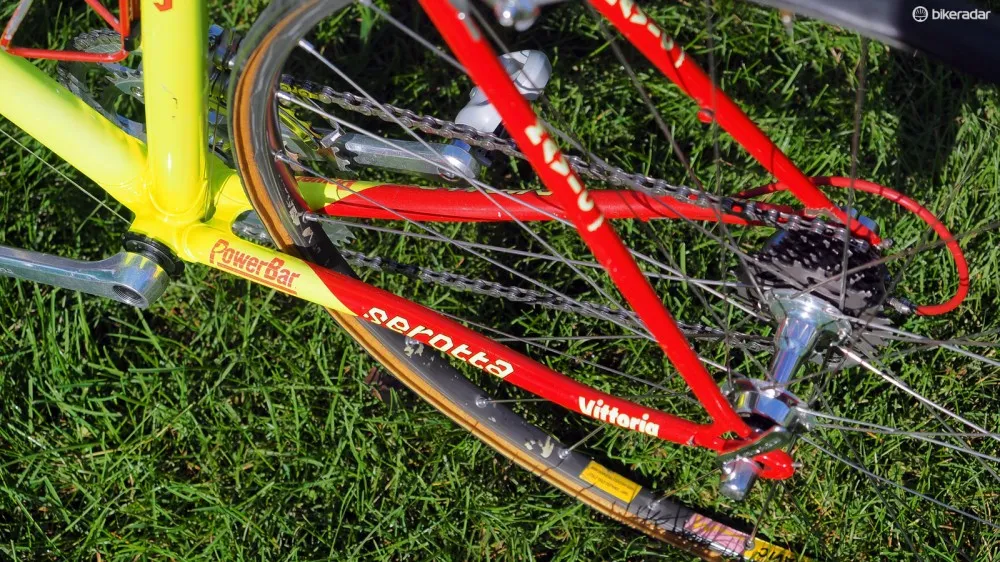
S-bend chain stays not only provided more heel clearance for riders but apparently stiffened up the back end, too
"We also went to great pains to bending our fork blades," he continued. "I was really adamant that we had a very fluid bend to the fork blades, which made the performance very predictable, and they were just elegant – the bend goes all the way to the dropout. Most of the pre-formed bent fork blades had this straight section at the end."
Every Coors Light team member was treated to custom geometry and Moninger says his preferences included a top tube that was roughly 1cm longer than what Serotta considered standard for the time.
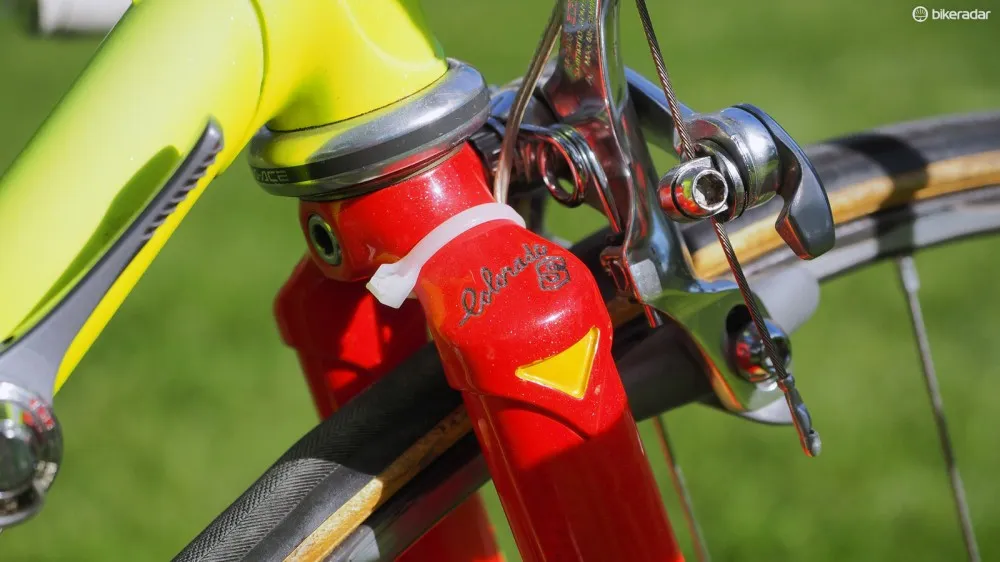
The Serotta Colorado II was an object of lust for many road racers at the time
While most of the pictures would suggest otherwise, Moninger's Serotta isn't a perfect time capsule of how it was at the end of his first season on the team. Some of the original components were scattered to parts unknown at the time, and the bike also spent a few years being ridden by Moninger's father before it eventually came back to him. Moninger says that most of the bike is original but certain bits such as the stem and bar were sourced later to make the bike complete and period correct.
Regardless, it's a beautiful specimen what with its 7400-series Shimano Dura-Ace group (with down tube shifters because they were lighter than the then-new STI Dual Control ones), lightweight hard anodized Mavic aluminum tubular rims, and white Selle San Marco saddle whose finish has been worn down by too many miles in the rain. Accenting the red stays and fork are matching red decals, cable housing and aluminum bottles cages from American Classic – one of the first products that the company ever made.

One of American Classic's earliest products were these lightweight aluminum bottle cages
Time has been kind to the bike's fluorescent yellow finish, too, which seemingly shimmers just as brightly as it once did – the benefit, Moninger says, of being stored in a dark cellar for much of its life.
That said, we're awfully happy that this machine has come back out into the light of day because it's simply too pretty to be hidden away.

Still beautiful after all these years
Special thanks to the folks at The Pro's Closet, who will soon open up a museum of noteworthy vintage bikes at their headquarters in Boulder, Colorado.
null
Complete bike specifications
- Frame: 1991 Serotta Colorado II, custom geometry
- Fork: 1991 Serotta Colorado II
- Headset: Shimano Dura-Ace HP-7400, 1in threaded
- Stem: Shimano Dura-Ace HS-7400
- Handlebars: Cinelli 64
- Tape/grips: Cinelli cork
- Front brake: Shimano Dura-Ace BR-7403
- Rear brake: Shimano Dura-Ace BR-7403
- Brake levers: Shimano Dura-Ace SLR BL-7402
- Front derailleur: Shimano Dura-Ace FD-7403
- Rear derailleur: Shimano Dura-Ace RD-7402
- Shift levers: Shimano Dura-Ace SL-7402
- Cassette: Shimano Dura-Ace Uniglide 8-speed, FH-7402
- Chain: Shimano Dura-Ace CN-7401
- Crankset: Shimano Dura-Ace FC-7400, 53/40T
- Bottom bracket: Shimano Dura-Ace BB-7400
- Pedals: Shimano Dura-Ace PD-7401
- Rims: Mavic CX-18 tubular, 28h
- Front hub: Shimano Dura-Ace HB-7402
- Rear hub: Shimano Dura-Ace FH-7402
- Spokes: Wheelsmith 14/15 double butted, alloy nipples
- Front tire: Vittoria Corsa CX tubular
- Rear tire: Vittoria Corsa CG tubular
- Saddle: Selle San Marco Strada
- Seatpost: Shimano Dura-Ace SP-7400
- Other accessories: Avocet 30 computer, American Classic bottle cages
